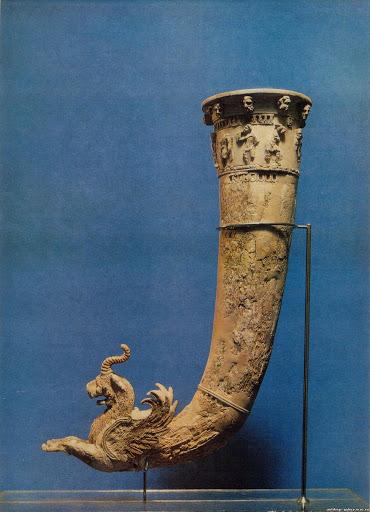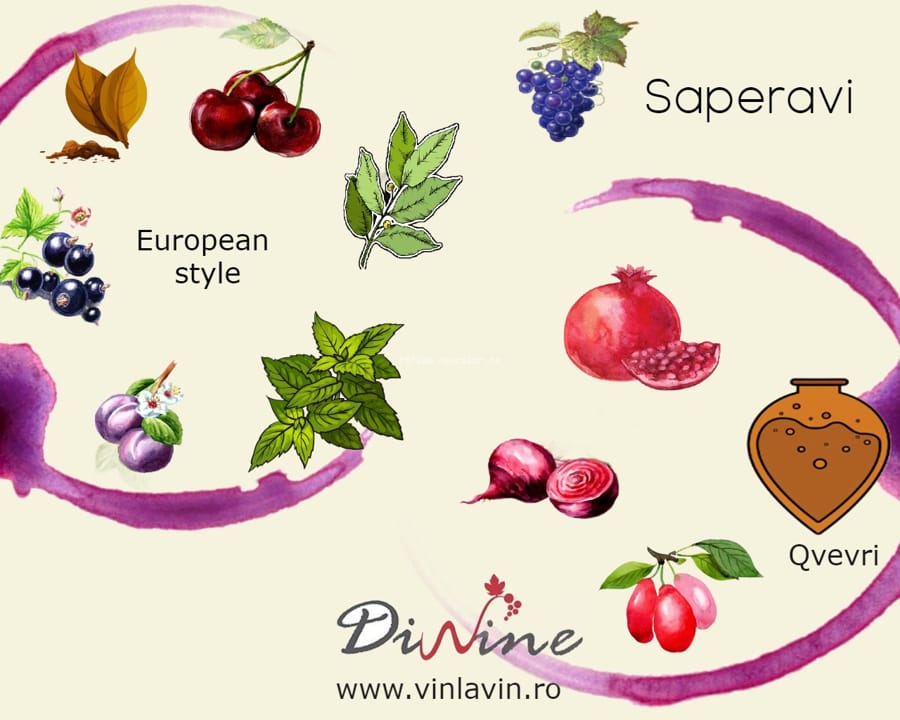Some of you may have had the opportunity to taste the wine made from the Riton variety at various fairs. There is a small winery in Moldova that has been producing Riton since 2018. The vineyards of this small producer comprise only 250 plants. You read that right, plants and not hectares. They are located in the Stefan Voda region, near Purcari. Riton is characterized by high productivity (12t/ha – 30 t/ha). That’s why, in order to obtain a quality wine, this small producer of Riton allows 30% of grapes to grow per plant.
History

The name Riton comes from the ancient horn-shaped vessels. These were made from the horns of horned animals, or from ceramic or metal. Historians note that there are two types of riton: conical – smaller in size; and horn-type riton – slightly longer. These vessels were intended for parties or other rituals. Most of the time, the top of these horns was shaped like an animal’s head, but some civilisations have some exceptions. For example, on the ancient fortress settlement of Erebuni (now Yerevan, Armenia), a silver rithon dating from the 16th century was discovered. The top of which depicted a horseman as a symbol of the powers of the rulers of the Urartu kingdom.
But back to the wine… Riton is a white variety of new selection, approved in the Republic of Moldova in 2000. Who are Riton’s parents? Throughout my documentation of Riton’s parents, I was faced with a small contradiction. In order to clarify the situation, I looked into who bred the variety and searched for studies.
So, we discovered that one of the parents is Villard Blanc. This is a French interspecific hybrid, created by horticulturist Bertille Seyve in order to resist some cryptogamic diseases. Sometimes Villard Blanc is also called Seyve Villard 12.375, or just SV12-375. As for the second parent, the Vitis International Variety Catalogue VIVC specifies the variety Gewürztraminer. Whereas, in other sources, including those made by the breeders of the variety, the second parent is mentioned as Riesling de Rhin. Upon tasting, I didn’t find it as fragrant as the Viorica variety.
In Moldova, Riton vineyards cover an area of approximately 137.32 ha, spread in the central and southern wine-growing regions. Vineyards are recommended to be planted on slopes that allow sugar to accumulate in the berries. Most of the plantations grow on clay soils at altitudes of 170-175 m, with a slope inclination of 5-7°.
Organoleptic characteristics of Riton
Riton is characterized by white floral aromas. Jasmine is the most obvious, followed by pear and green apple, coupled with sweet aromas. Personally, it reminded me of cream soda – the soft drink of my childhood. A mineral, fresh taste with a round, well-defined structure. In terms of sugar concentration, it reaches 199g/dm³, while some research from other better years also indicates values of 210 g/dm³. This also explains the 13.4% alcohol level in the raw material. Research has also shown that Riton and Floricica (another new selection variety) have a higher mass concentration of volatile acidity compared to other new white varieties, reaching maximum values of 0.59 g/dm³.
In coupage, Riton could be a harmonious partner. If sparkling wines were produced from Riton, it would achieve lower foaming indicators. For example, the foaming settling time would be 132 s.
Agrobiological particularities

Riton is an early variety, with average resistance to diseases such as mange, grey rot, etc. The white Riton variety is compact, conical, winged, medium to large in size. It can weigh up to 225g – 240g. The berries are greenish-yellow, brownish pigments are present on the sunnier side. The flesh is juicy, with neutral flavours and a pleasant taste.
Some experiments carried out under laboratory conditions, under the forced influence of growth factors, with artificial climate, new selection vine cuttings have shown different cutting regeneration activity depending on the variety. Regeneration, in general, refers to how the plant recovers after some extreme conditions, such as after a hard winter with frost, etc. Therefore, from day 14, 21 and 35 of growth, depending on the variety, the researchers were able to classify different rhizogenesis capacity. In simpler terms, an attempt was made to observe which new and mass selection varieties have rooting ability.
The results placed Riton in the “very high” category compared to Viorica, with “average” indicators in forming strong roots for cuttings development. Thus, the dynamics of root and shoot formation on the 35th day of development showed for Riton a number of roots of 10.9, and for Viorica – 7.4 roots per cutting. The Riton variety can withstand low temperatures of -24°C.
Some researchers have tried to demonstrate that the alcoholic fermentation process of Riton must, under normal conditions, with a maximum temperature of 20°C and a minimum of 16°C, showed a more intense fermentation lasting only 12 days compared to 20 days for the Viorica variety.
Personally, I didn’t understand why this research was done, especially since the alcoholic fermentation process itself does not depend on the variety or style of each individual producer. It is a natural process that can take an average of 5-40 days, depending on the fermentation temperature, biological factors (pH, nitrogenous substances in the must, sugar level, etc.). Understandably, alcoholic fermentation ends when the must becomes dry wine.
What do we remember about Riton?
- This is a new selection, the youngest, less researched but with potential;
- The quiet wines of the Riton variety have a full character with a refreshing, mineral freshness;
- Riton – a quality wine produced in limited quality;
- Riton can be used to create sparkling wines;
- Riton cuttings have a high capacity to form strong roots and shoots. A strong plant root also means a wine with character;
Producers in Moldova: Gogu Winery, Mileștii Mici.
Riton Gogu Winery can be found in Romania. For orders contact us on the number above.
Bibliography
- Știința agricolă, nr. 2/2008;
- Lucrări științifice: [UASM] Vol. 9;
- Conferința tehnico-științifică a studenților, masteranzilor și doctoranzilor, 1-3 aprilie 2020, Chișinău, Republica Moldova, vol. I;
- Articol parte din volumul „Vinul din Mileniul III”, s.a.;
- Viticultura și Vinificația în Moldova Nr.4, [70].2017;
- Viticultura și Vinificația în Moldova Nr.6, [54].2014;
- Вестник древней истории, nr.04. 2003.









